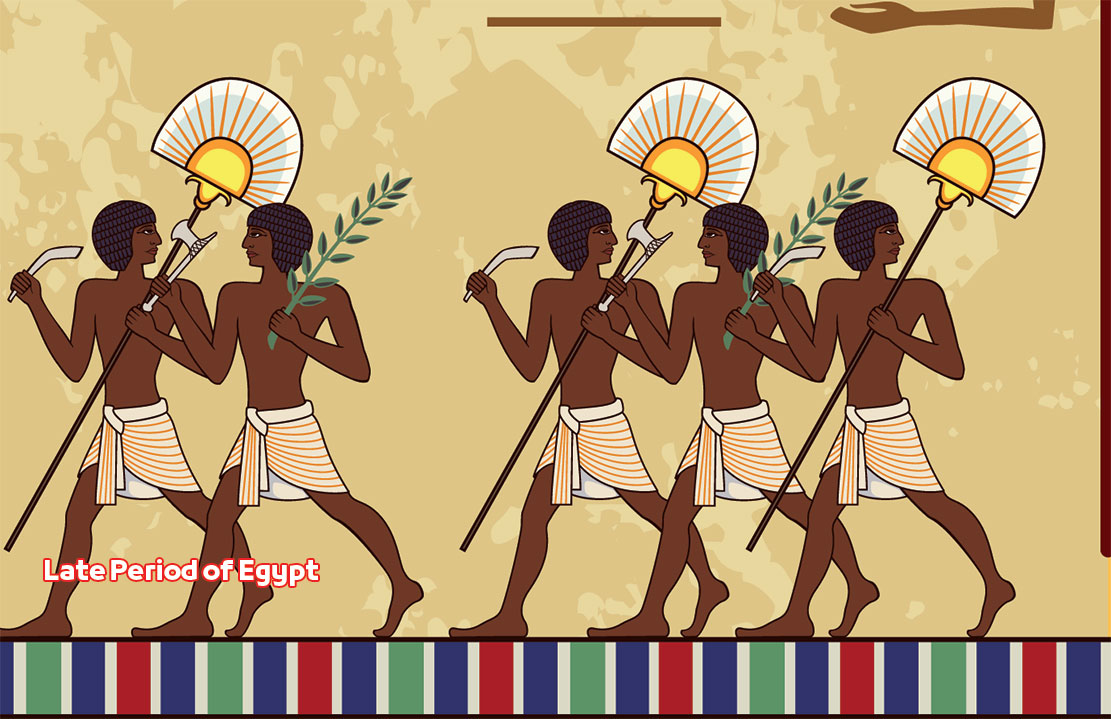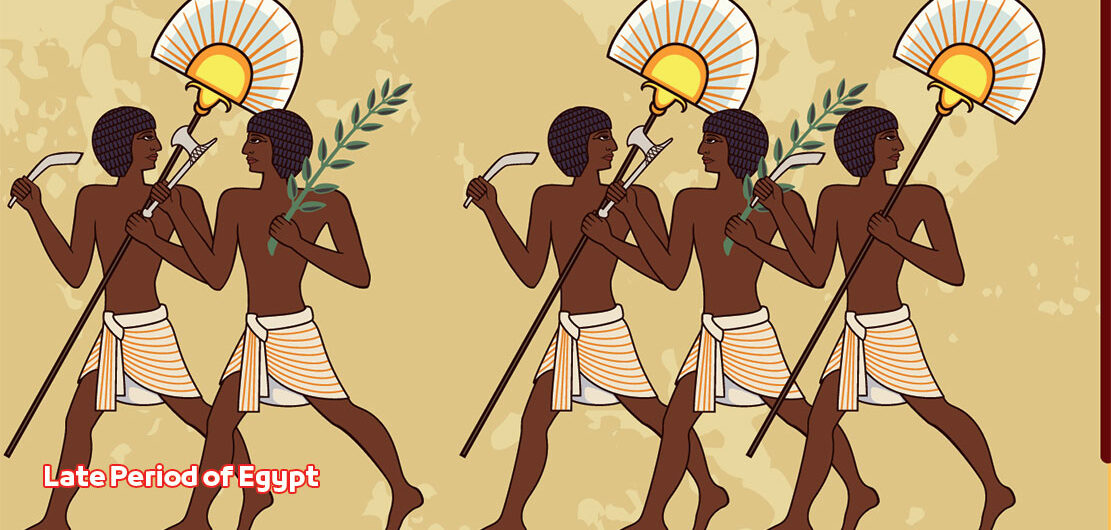Late Period of Egypt | History Of Egyptian Civilization
Discover the history of the Pharaonic civilization, the historical facts of the last transition phase, the late Pharaonic period, the Pharaonic Egyptian Antiquities, and what are the Egyptian dynasties and Egyptian Pharaohs kings that ruled that period and Ancient Egypt History.
Late Period of Egypt Facts
The era witnessed a period of decline in Agriculture in Ancient Egypt, Ancient Egyptian science, and Industry in ancient Egypt, beginning from 664 to 332. The rulers of Egypt were weak, Egyptian kings were weak, and Revolutions in Ancient Egypt.
The period of rule of the Pharaohs of Egypt, the Twenty-Sixth Dynasty of Egypt, was from 664 to 525 BC..
Time period of rule in Ancient Egyptian Government: 663 – 332 BC.
It includes the Pharaonic dynasties 26-27-28-29-30-31
The Assyrians occupied Egypt and annexed it to their empire while the Nubians ruled it. It is clear from this that ancient Egypt began to collapse after it was ruled by foreign peoples, such as the Libyans, Ethiopians, and Assyrians..
The reform attempt undertaken by King Psamtik I of the Twenty-Sixth Dynasty of Egypt, who ruled for more than half a century, was of no use.
Then came king Amasis II This attempt was nothing but the awakening that preceded death. The Babylonians put pressure on Egypt in the late era, and then the Persians occupied it. The last three dynasties witnessed the end of this great civilization.
Egyptian religion in the late era, the era of decline:
The Ancient Egyptian religion was in a critical situation in this era. In the face of political setbacks and the gradual decline of civilization, the priests of Egypt resorted to a fundamentalist return to the Egyptian religion during the era of the Old Kingdom of Egypt, the beginning of the rule of King Djoser of the Third Dynasty of Egypt, and it seems that stages of cultural decline are sometimes imposed, such as This is a religious decline, and there is a strong belief that the people of the ancient era had reached a level of knowledge that cannot be surpassed.
This stage was called the Sawi stage, which witnessed the Sawis’ passion for searching for texts and papers in the Ancient Egyptian Papyrus that had been covered by the dust of many generations, collecting them, examining them, and then organizing them. Thus, the reason for the victory of the past over the present becomes clear and the reason for the ignorance of the priests opposing this reactionary movement about what is going on around them in the world..
This collection of origins was accompanied by a return to the texts of Magic in ancient Egypt and the spread of its applications.
The magical animal forms of the gods revived, and the groups of ancient Egyptian deities appeared as if they were a mixed animal mosaic, as if a return to the animal world had been established after the Egyptians called their gods to monotheism in the era of The New Kingdom at the beginning King Ahmose I ruled with his wife, Queen Ahmose Nefertar, during the Eighteenth Dynasty of Egypt, and this is another manifestation of regression..
In this era, the worship of the God Set was abolished, as he was a symbol of devastation and destruction. At the same time, he exalted the role of the God Isis until she became like the mother goddess of the ancient Egyptian nation in the late era.
This cultural regression appears as the mother goddess was invoked in the image of Isa, who was worshiped as if she was the protector of Egypt, as in the stories of Ancient Egyptian Literature and myths of the Pharaohs “Egyptian Mythology“.
Suddenly, the role of the Apis calf (one of the forms of the God Ptah) increased. They worshiped him carefully and began burying his body in a solemn ceremony in the special Tomb of Serapeum next to Memphis.
As for the sanctification of this calf, it began during the era of the Old Kingdom, and it has now become of great importance to the point of reaching the point of religious fanaticism. Among the people of Alexandria during the era of the Roman Kingdom “Greek-Roman era“.
It seems that the priests of the Sawi era interpreted these external manifestations with the philosophy with which they interpreted their religious myths, thus creating something that had not previously existed or been attributed to them..
Note: Facts and secrets of the history of the Pharaoh kings will be added soon…
Hurghada Excursions Lovers, Best Travel Agency in Hurghada to provide daily tours to visit the Tourist attractions of Luxor by Hurghada to Luxor Tours and Hurghada to Pyramids Trips. Book online when you come to Hurghada, El Gouna, Sahl Hashish, Makadi Bay, Soma Bay.

